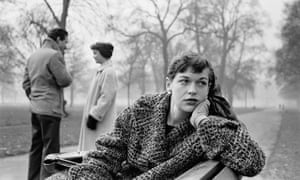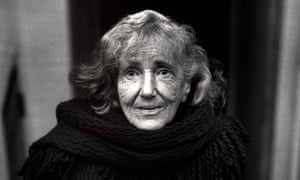
It’s something of an understatement to say that Fleet Street has not always been known as a habitat friendly to women. But in 1891, almost a full century before the phrase “glass ceiling” was coined, a dabbling writer from a rich and notable family became the first female editor of a British newspaper. Granted, Rachel Beer’s husband, Frederick, owned that newspaper, the Observer. Granted, too, the business of editing a broadsheet was then less onerous than it is now (for a time, Beer would edit the Observer and the Sunday Times in tandem). Nevertheless, it was no small achievement, and in 1898 Beer went on to orchestrate one of the great scoops of the decade: Major Esterhazy’s confession of the forgery of the letters that had falsely convicted Alfred Dreyfus of treason in France.
Beer, who did the job until 1904, was the Observer’s sixth editor, and she remains the only woman to have held the position. It was left to a man, David Astor, to publish the paper’s first women’s page in 1958, with its female editor appointed via a competition. The successful entrant, Patience Gray, co-author of the 1950s bestselling cookbook Plats Du Jour, was thrilled to have won, if somewhat amazed: however clever and resourceful, she was hardly a “proper” journalist. Her joy at landing the job, however, rapidly diminished when Astor informed her that “the ‘ideal person’ they had endeavoured to persuade [to do it] was not available”. (This, she believed, was the glamorous, witty Anne Scott-James, a former editor of Harper’s Bazaar, and then a star writer on the Sunday Express.)
Arriving at the newspaper’s offices off Fleet Street, Gray found what looked very much to her like a club for old Etonians. “A woman was not exactly persona grata at Tudor Street,” she would later write. “The brilliant and delightful CA Lejeune [Caroline Lejeune, the paper’s film critic] was invisible, at home or watching films. Vita Sackville-West wrote her weekly article [on gardening] at Sissinghurst and posted it. Jane Bown [the photographer], already a wizard, then, was in her darkroom when not on photographic missions. Only Alison Settle, marooned with her all-too-female fashion theme in a room apart, was established there.” Settle, the flame-haired fashion editor of the Observer, promptly invited Gray to lunch at the Women’s Press Club, where she attempted to offer the new girl some advice. “Women in a man’s world should stick together,” she said.
The page of which Gray was now editor was called A Woman’s Perspective. Not even she was exactly sure what this meant. Much as she would have loved to be able to write about how a woman might bring up two children alone at the same time as earning a living (the situation she was in herself), such matters were then still taboo. All she could really do was follow her own “predilections” – for modern architecture, design, the arts and, above all, for the food and culture of Europe – and hope that her boss (a man, naturally) would agree they might have some appeal for readers. But doing this was often a struggle. When Gray, a consummate traveller, reported that she had seen a brilliant performance by Marcel Marceau in Paris, she was told there was no point in writing it up: mime was so un-English! Far better to stick to doing a column about domestic bargains such as rubber-backed carpets and battery chickens.
Post lunch, her male colleagues had a tendency to put their hands where they were not wanted. They also seemed to believe she was here to help fix their domestic problems. Astor, having read an article by Gray about a show of modern jewellery at Goldsmiths’ Hall, asked her to choose a birthday present for his wife.

Gray lasted until 1962, when she received a note from Astor suggesting it was time to go. George Seddon, the features editor, then approached Katharine Whitehorn, who was working as a columnist on The Spectator. Astor had decided he now wanted two women’s editors, “one doing the frocks and one the gravitas”, as Whitehorn later recalled. At first, she agreed only to do the frocks, not wanting to forsake The Spectator. But in 1963, she joined the Observer full-time, where she became one of the first columnists to bridge the divide between women’s writing and “what I suppose the blokes would have called serious writing”. This, she achieved in spite of the fact that Astor didn’t believe mothers – Whitehorn had two small sons – should work. (When Claire Tomalin, the award-winning biographer, applied for a job at the Observer, Astor, according to his biographer, Jeremy Lewis, sent a message to say that she should be at home with her children.)
In 1962, Whitehorn attended a conference organised by the International Press Institute in Paris on the subject of the women’s page and, on the back of it, wrote a column in which she agonised over the idea of certain parts of a newspaper being designed specifically to appeal only to one gender. Even then, she didn’t wholly approve of such an idea. “It seems likely,” she noted, “that as better writing, on what are reckoned to be the woman’s pages, drags the male eye increasingly across them… and as women increasingly write on general subjects without feeling that [they must] write fluffily to assert their femininity, the distinction between what is/what is not women’s material will become increasingly blurred.”
In time, of course, this is exactly what happened, the women’s page going through a series of incarnations, each with different, increasingly vague titles – in the early 1970s, when Shirley “life’s-too-short-to-stuff-a-mushroom” Conran was in charge, it was known as Hers, which makes it sound like a sanitary product – until, ultimately, it disappeared altogether (Women’s Lib: Could It Happen Here? asked the headline over a piece by Whitehorn in 1971, on a page that was coyly called Outlook.) Still, in its day, such a fencing-off was undoubtedly a necessary evil: a means of pushing open the doors that would, in time, enable some of the very best women writers and journalists to find a home at the Observer. From Lynn Barber to Mary Holland, Sally Brampton to Penelope Mortimer, the list is long now, and growing all the time.